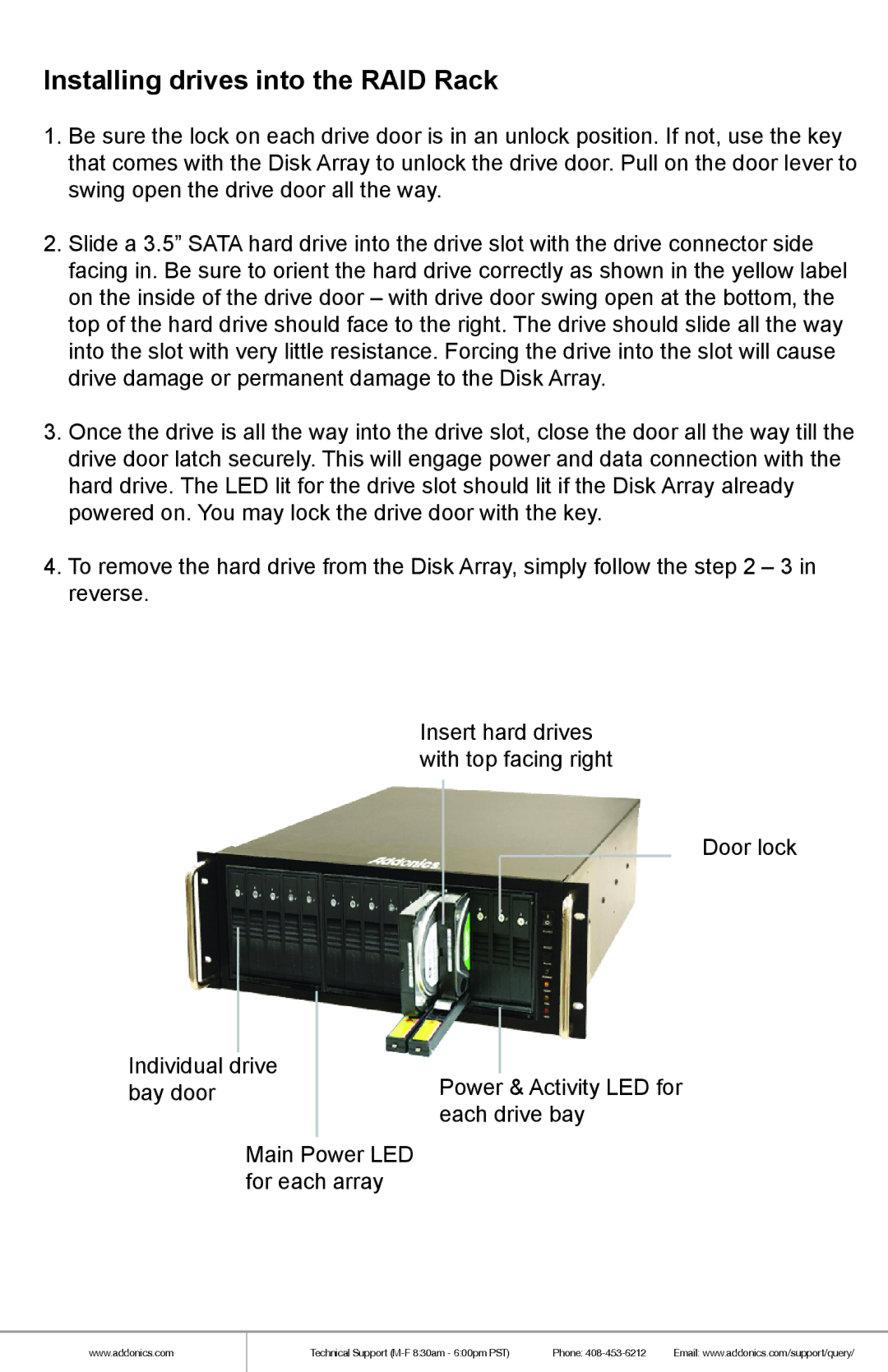RR2035RSDES specifications
Addonics Technologies is known for delivering high-performance storage solutions, and the RR2035RSDES is a standout product in their lineup. This innovative device is a 2U rackmount RAID storage system designed to accommodate up to 35 SATA hard drives, making it ideal for data-intensive applications in a variety of sectors, including media production, cloud services, and large-scale data management.One of the primary features of the RR2035RSDES is its extensive storage capacity. With the ability to house 35 drives, this system can offer significant scalability, allowing users to expand their storage needs as their data requirements grow. The device utilizes a 3.5-inch SATA interface, which is well-regarded for its reliability and high data transfer rates, catering perfectly to both consumer and enterprise applications.
The RR2035RSDES employs advanced RAID technology, supporting a range of RAID levels, including 0, 1, 5, 10, and JBOD. This flexibility enables users to choose the right configuration to balance performance, redundancy, and storage capacity based on their specific needs. Additionally, the unit is equipped with a hardware RAID controller that enhances data protection and access speed, ensuring that the data is not only safe but also readily available.
Cooling is another significant consideration in storage solutions, and Addonics Technologies does not skimp in this area. The RR2035RSDES features intelligent temperature management through its built-in cooling system, which includes multiple fans that automatically adjust their speed based on internal temperature. This design prolongs the lifespan of the hard drives while maintaining optimal performance.
In terms of connectivity, the RR2035RSDES is designed with versatility in mind. It includes various interface options such as USB 3.0, eSATA, and iSCSI, ensuring compatibility with a wide range of devices and networks. Users can easily integrate the system into their existing infrastructure without any complex configurations.
Additionally, the device is geared towards ease of use, featuring a user-friendly interface that simplifies management tasks such as monitoring drive health and configuring RAID settings. The integrated LCD panel provides real-time status updates, making it easier for users to keep an eye on performance and respond to any issues that may arise.
In summary, the Addonics Technologies RR2035RSDES is a robust and scalable RAID storage solution that combines high capacity, advanced data protection features, and reliable performance. Its thoughtful design catering to cooling, connectivity, and management makes it a go-to choice for users needing a dependable storage solution for high-demand environments.

